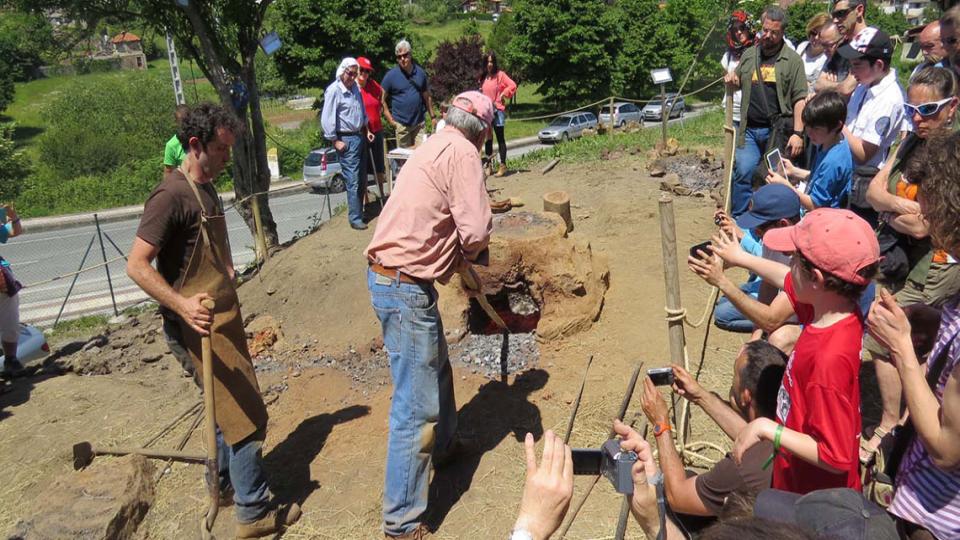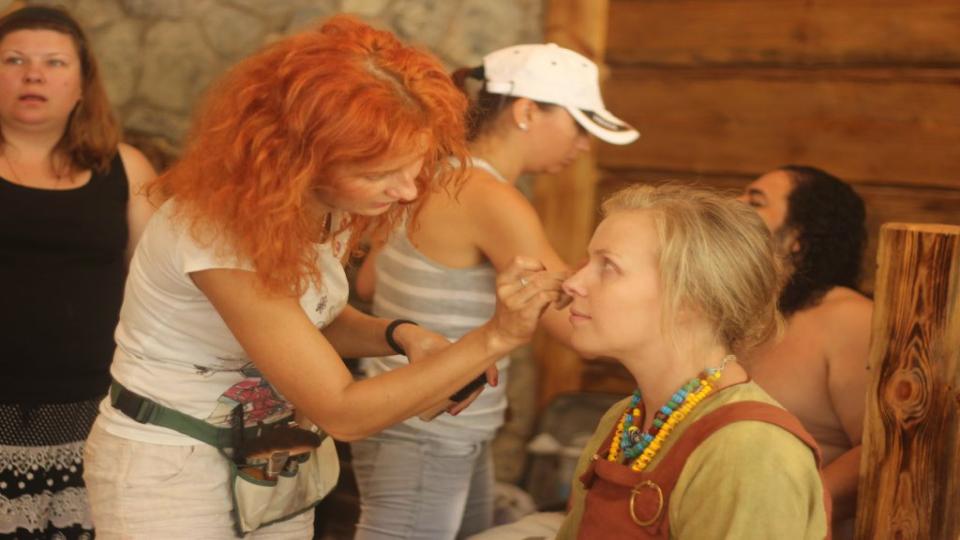iron
Museo de la Mineria del Pais Vasco (ES)
Mining Museum of the Basque Country - Archaeological survey along all the Basque Country to locate “ferrerias de monte”. Selected archaeological digs. Reconstruction of a medieval iron workshop due to realize public demonstrations for experimental archaeometallurgy congresses, schools and general public.
Bloom
A bloomery is a type of furnace once widely used for smelting iron from its oxides. A bloomery's product is a porous mass of iron and slag called a bloom.
Iron
Hard silvery-white magnetic metal (Fe).
Archeopark Mesopotamia (RU)
Archeopark Mesopotamia (Археопарк Междуречье), just 25 km north from Ulyanovsk, is an archaeological open-air museum and archaeological reservation of 250 hectares. It includes as well a small hotel and an indoor museum. A visit starts with a guided tour which includes demonstration of craftspeople.
Did the Vikings have iron (NO)?
Yes, the Vikings had both iron and steel. They had to make it themselves, through a process called “blestring” or iron smelting. This was a major undertaking, so iron was expensive. Here at Lofotr we have documented this process on a DVD which is sold in our museum store.
Iron in the Iron Age, did that exist (NL)?
It is not for nothing called "Iron Age". The art of making iron originates - like many developments - from the Near East. In the Southern Netherlands, for tools and weapons, often wood and stone were used, occasionally bronze...
Where did the raw materials fot the medieval blacksmith come from and how did they get to him (NL)?
Probably, there were already tradesmen in iron and coal. Iron came form Germany, Sweden and the UK. Here there are locations where iron ore is found at the surface. Coal came from Germany...
You are cheating – they didn’t have iron axes in prehistory, did they (DK)?
No, not in the Stone Age. But here we are in the Iron Age. Do you remember the names of the periods: Stone Age, Bronze Age and Iron Age? You do not need to be embarrassed, but the names tell us when the different materials were introduced...
How did people make fire in the early Middle Ages (NL)?
Two methods were used to make fire. One was by striking a special piece of iron (strike-a-light) on a piece of flint. The other method is by friction of wood on wood. The strike-a-light was most common. Sometimes people used the back of a knife to strike sparks. Friction of wood on wood (“the old-fashioned way”) was used at religious occasions...
What contacts existed between the inhabitants of the lake fortress and other countries (LV)?
In the Early Middle Ages, active trading contacts developed in Latvia, also involving the inhabitants of the lake fortress. Imported jewellery and parts of weapons have been found in the cultural layer...


